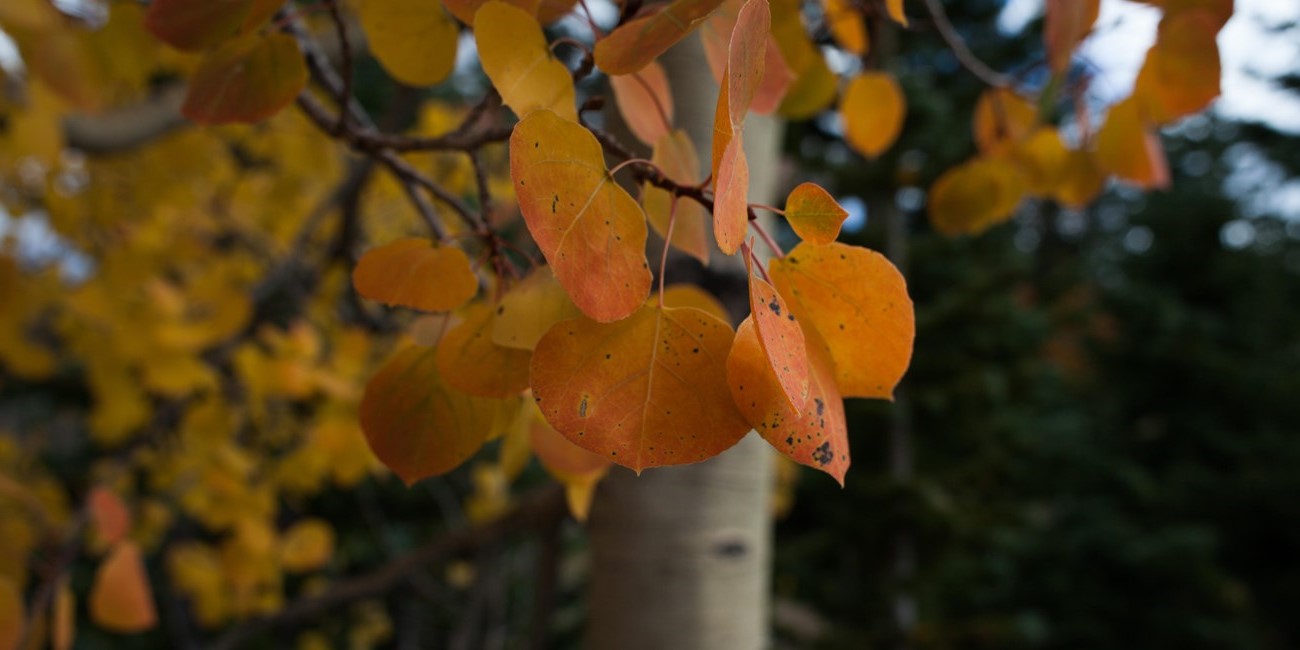
Ever wondered why quaking aspen trees seem to whisper secrets as the wind dances through their leaves? Well, you're about to find out! Quaking aspens, with their distinctive white bark and fluttering leaves, are more than just a pretty sight. They hold secrets and stories that stretch back centuries. From their unique method of reproduction to their role in the ecosystem, these trees are full of surprises. Did you know that a single quaking aspen grove can actually be one giant organism? Yes, you read that right! Stick around as we uncover 23 fascinating facts about these enchanting trees. Prepare to be amazed by the world of quaking aspens, where every rustle of leaves tells a story.
What Makes Quaking Aspen Trees Unique?
Quaking aspen trees, known scientifically as Populus tremuloides, stand out for their distinctive trembling leaves. This unique feature is due to flattened petioles, which allow even the slightest breeze to cause a fluttering effect. Here's why these trees are fascinating:
-
Quaking aspens are renowned for their vibrant fall colors. Leaves transform into brilliant shades of yellow, gold, and sometimes red, creating breathtaking landscapes.
-
They possess a remarkable ability to reproduce through root suckers, leading to the formation of large clonal colonies. Each colony, essentially a single organism, can cover vast areas.
-
One such colony, named Pando, is believed to be among the oldest and heaviest living organisms on Earth. It spans over 106 acres in Utah's Fishlake National Forest.
The Ecosystem Role of Quaking Aspens
Quaking aspens play a crucial role in their ecosystems, supporting diverse wildlife and contributing to forest health:
-
Their leaves, bark, and buds serve as food for various animals, including deer, elk, and moose, especially during winter when other food sources are scarce.
-
These trees act as pioneering species, quickly colonizing open areas after disturbances like fires. This helps stabilize the soil and provides shade for slower-growing species.
-
Birds and insects benefit from quaking aspens too. Woodpeckers, for instance, often nest in their trunks, while butterflies are attracted to their nectar.
The Growth and Lifespan of Quaking Aspens
Understanding the growth patterns and lifespan of quaking aspens reveals more about their resilience and adaptability:
-
Quaking aspens can grow rapidly, up to 2 feet per year, making them one of the fastest-growing North American trees.
-
Despite their quick growth, individual trees typically live around 50 to 150 years. However, the root systems can survive for thousands of years, continually sprouting new trunks.
-
These trees thrive in a variety of climates, from cold northern regions to high mountain altitudes, showcasing their versatility.
Conservation Efforts for Quaking Aspens
Conservation of quaking aspens is vital for maintaining biodiversity and ecosystem health. Here are some efforts and challenges:
-
Climate change poses a significant threat to quaking aspens, with rising temperatures and altered precipitation patterns affecting their growth and survival.
-
Overgrazing by livestock and wildlife can also hinder the regeneration of young aspens, leading to decreased population density.
-
Conservationists are working to protect existing colonies and encourage the growth of new ones through controlled burns and grazing management, ensuring these iconic trees continue to thrive.
Quaking Aspens in Culture and History
Quaking aspens have held symbolic significance in various cultures and historical contexts:
-
Native American tribes have traditionally used quaking aspen bark for medicinal purposes, treating ailments from fevers to wounds.
-
The tree's unique appearance and sound have inspired numerous myths and legends. Some cultures believe the trembling leaves could ward off evil spirits.
-
In modern times, quaking aspens are celebrated for their aesthetic value, often featured in photography, paintings, and landscape design for their striking beauty and serene ambiance.
The Science Behind the Quake
The quaking motion of the aspen leaves is not just a visual spectacle; it has scientific explanations and implications:
-
The flat petioles of the leaves act like nature's wind vanes, catching even the slightest breeze and causing the characteristic trembling motion.
-
This quaking effect is beneficial for the tree, as it reduces water loss through transpiration on hot, sunny days.
-
Research suggests that the movement may also deter some leaf-eating insects, providing a natural form of pest control.
Quaking Aspens and Climate Change
Quaking aspens offer insights into the impacts of climate change on forest ecosystems:
-
Scientists study quaking aspens as indicators of environmental changes due to their sensitivity to temperature and moisture levels.
-
Observations of aspen die-offs in some areas have raised concerns about the future of these trees under global warming scenarios.
-
Efforts to model and predict the responses of quaking aspens to climate change are crucial for developing strategies to protect them and their ecosystems.
The Aesthetic Appeal of Quaking Aspens
Beyond their ecological importance, quaking aspens are beloved for their visual and auditory beauty:
-
The sight of a quaking aspen forest in autumn, with its golden leaves shimmering in the wind, is a major draw for nature enthusiasts and photographers.
-
The gentle rustling sound of the leaves, often described as a whispering or quaking, adds a peaceful, calming element to forested areas, enhancing the outdoor experience for many.
A Final Glimpse at Quaking Aspens
Quaking aspens, with their distinctive trembling leaves and striking white bark, stand as a testament to nature's resilience and interconnectedness. These trees not only add beauty to landscapes but also play a crucial role in their ecosystems. They provide habitat for wildlife, support biodiversity, and contribute to soil stabilization. What's more, their ability to regenerate quickly from their root systems makes them a symbol of renewal and growth. As we've seen, the quaking aspen is more than just a tree; it's a complex, living network that teaches us about the importance of connections in the natural world. Next time you see these trembling leaves, remember, you're looking at one of nature's most fascinating creations. Let's continue to appreciate and protect these remarkable trees for future generations to marvel at and learn from.
Was this page helpful?
Our commitment to delivering trustworthy and engaging content is at the heart of what we do. Each fact on our site is contributed by real users like you, bringing a wealth of diverse insights and information. To ensure the highest standards of accuracy and reliability, our dedicated editors meticulously review each submission. This process guarantees that the facts we share are not only fascinating but also credible. Trust in our commitment to quality and authenticity as you explore and learn with us.


